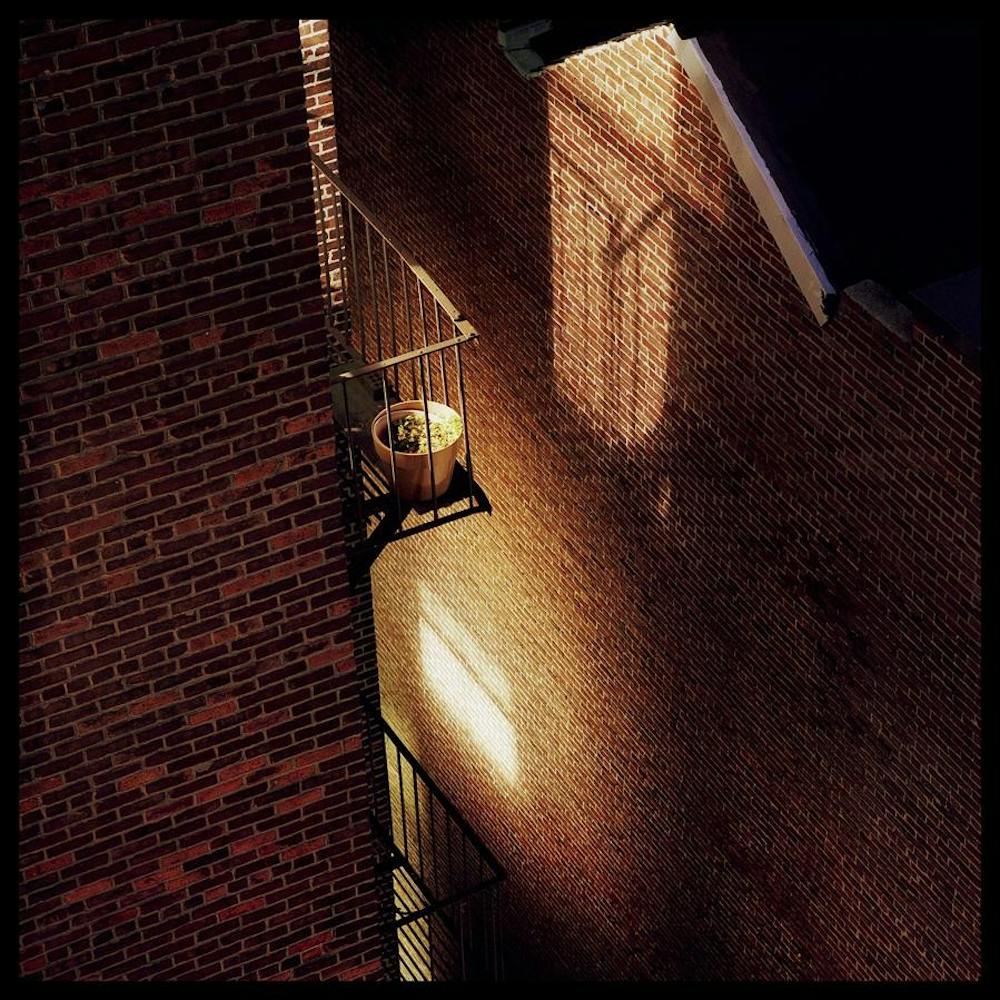Joe Johnson’s photography collection “City Pictures” reveals an intricate, architectural urban landscape — but a closer look proves the vital human element within.
Johnson, who currently teaches at the University of Missouri, was recently featured at the Pictura Gallery in Bloomington alongside Aaron Colussi’s exhibit “1+1=3.”
Johnson’s “City Pictures” focuses on urban landscapes but contains diverse perspective and scope, linked by the decision to shoot all photos at night. Some, like “Ten Windows,” give the collection a slightly voyeuristic feeling; shot from a rooftop, it glimpses human shadows and a small toy skeleton. “Bag on a Roof” approaches the subject from a distance, catching only a product of human waste lying lifelessly on a ledge — the reminder of human presence in an otherwise lonely and mysterious midnight world.
Native to the notorious rolling plains of Kansas, the density of a single city block impressed Johnson.
“It (hit) me ... within this single frame, by the sum of the lit windows alone, I can represent the entire population of my hometown,” he said. “Kansas was dominated by the horizontal plane, but Boston and New York forced me to think vertically.”
Johnson often plays with perspective in his photos, shooting from several vantage points to catch the layering effect of surrounding windows and rooftops. He says that this experimentation allowed him to gain access to a variety of potential compositions but also gave a disorienting, almost theatrical feeling. The city in this case became a fictitious entity, and the individual experience of a city dweller became a communal experience in its own right.
“I always tell my students to be an active viewer, not a passive viewer,” Johnson said. “Photography is a reason to go out and look at things.”
Perhaps the most remarkable aspect of Johnson’s “City Pictures” is the vivid, intense palette that most painters strive for. His work in both “City Pictures” and “Mega Churches” is filled with lush greens and buttery yellows, the latter with neons and whites subconsciously associated with televangelism and ministerial consoles. He attributes this to extra-long exposure times and minimal digital altering.
When asked if he was particularly attached to traditional methods, Johnson said he does not reject digital tools — he simply believes analogue suits his work best.
Johnson carries a 4- by 5-inch field camera frequently for the multiple projects he is involved with at any time, but “City Pictures” required some deliberate shooting with a Hasselblad medium format camera.
Johnson was able to gain access to some of the best — yet anonymous — views in New York and Boston by offering prints to friends and acquaintances who would allow him to photograph from the rooftops of their homes. He said he always went cold, never knowing what view would be available, and found his composition after setting up.
This particular collection offers much in the way of high detail, aided by the sheer size of the 40- by 40-inch inkjet prints. It’s the size of the prints, Johnson said, that allows viewers to interact with the city scene in a way different from smaller photographs and even other city photographs.
“I hope that viewers will be able to look at the print at large competing for space the way small photographs don’t,” Johnson said. “‘City Pictures’ is intentionally claustrophobic and vertigo-inducing.”
One of the most appealing things about the city, he said, was the way photographing there forced him to proactively engage the world around him. His decision to photograph at night, he said, particularly highlighted the psychological
aspects of city life and the fictive city many imagine. The night theme in “City Pictures” enhances the human relationship to this collective notion of the city as well as creating a sense of suspense and unease.
Johnson said he enjoys focusing on architecture, especially in his more recent “Mega Churches” series, where the architecture can serve as a mechanism of social control.
This is also reflected in the aged molding near the roof on “Eight Windows” and the class-constructed fight for green space on the rooftops in “Compression.”
His other series include “Local Weather,” “Kansas” and “Colonial Theater, Pittsfield, MA.”
Johnson was recently nominated for the Baum Award from SF Camera Work, was runner-up for the 2009 Aperture Portfolio Prize and received an Individual Creativity grant in 2008 from the Ohio Arts Council.
Professor brings the big city to Bloomington

Get stories like this in your inbox
Subscribe





